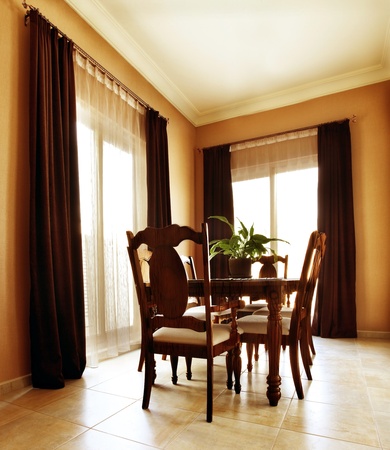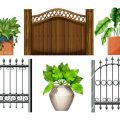Introduction to Layering Window Treatments
When it comes to British interior design, the art of layering window treatments is both a practical and stylish choice. Combining voiles, blinds, and curtains not only enhances privacy and light control but also adds depth, warmth, and elegance to any room. Layering allows you to play with textures, patterns, and colours—an approach that has become a staple in UK homes where changeable weather and a love for cosy interiors meet. The traditional British home often features sash windows or bay windows, making them ideal canvases for creative window dressing. By thoughtfully mixing these elements, you can tailor your space for every season and mood while boosting energy efficiency and visual appeal.
2. The Basics: Voiles, Blinds, and Curtains Defined
Before embarking on the journey of layering your window treatments, it’s essential to understand the unique function and appeal each element brings to a British home. Let’s explore how voiles, blinds, and curtains differ in terms of style, material, and purpose, helping you make informed choices for your space.
Voiles: Lightness with Elegance
Voiles are sheer, lightweight fabrics that gently diffuse natural light while maintaining a sense of privacy. In UK interiors, voiles are especially popular for their ability to soften daylight—ideal for those overcast afternoons or urban settings where privacy is prized without blocking all sunlight. Classic white and cream voiles evoke an airy, contemporary look, but coloured and patterned options add subtle flair to period homes or modern flats alike.
Popular Voile Materials:
| Material | Style Note | Common Use |
|---|---|---|
| Polyester | Crisp drape, easy-care | Modern homes, rental flats |
| Linen blend | Natural texture, relaxed feel | Country cottages, Scandi-inspired spaces |
| Cotton voile | Soft finish, breathable | Bedrooms, bay windows |
Blinds: Practicality Meets Design
Blinds offer versatility and clean lines—making them a staple in both classic and contemporary British interiors. From sleek roller blinds in minimalist city apartments to wooden Venetian blinds in Victorian terraces, their adaptability is unmatched. Blackout fabrics are favoured for bedrooms (especially in those long summer evenings), while lighter weaves work well in kitchens or home offices.
Popular Blind Styles:
| Type | Best For | Typical Material |
|---|---|---|
| Roman Blinds | Living rooms, dining areas | Cotton blends, velvet |
| Roller Blinds | Kitchens, bathrooms | Synthetic fabrics, waterproof finishes |
| Venetian Blinds | Bays, studies | Wood, aluminium |
| Vertical Blinds | Patiod doors, large windows | PVC, fabric vanes |
Curtains: The Finishing Touch of Comfort and Drama
Curtains frame windows with softness and grandeur—whether pooling opulently on parquet floors or skimming modern carpets in new builds. In UK homes, heavy lined curtains are often chosen for insulation during chilly winters. Lighter cotton or linen drapes create a breezy look for spring and summer. Patterned florals remain a favourite for traditional decors; meanwhile, block colours suit minimalist schemes.
Curtain Fabric Favourites:
| Fabric Type | Aesthetic Effect | Where Used Most Often |
|---|---|---|
| Velvet | Luxe texture, dramatic fall | Lounges, master bedrooms in period properties |
| Linen/cotton blend | Naturally relaxed vibe | Kitchens, family rooms in country homes |
| Thermal blackout lining | Total darkness & insulation | Nurseries, bedrooms across the UK’s cooler regions |
| Synthetic sheers & prints | Diverse patterns & easy care maintenance | Kid’s rooms, rental accommodations |
This foundation sets the stage for artfully layering these elements—combining practical benefits with distinctive British style to elevate your living space.
![]()
3. Choosing the Right Combinations for Your Space
When it comes to layering window treatments in British homes, selecting the right mix of voiles, blinds, and curtains is essential for achieving a harmonious look that complements your interior style—be it a classic townhouse, a sleek modern flat, or a cosy countryside cottage. The key lies in carefully balancing textures, colours, and patterns to enhance both functionality and aesthetic appeal.
Tips for Harmonious Layering
- Texture: Combine soft voiles with structured Roman or roller blinds for depth, then finish with heavier curtains for insulation and luxury. Mixing materials like linen, velvet, or cotton can add tactile interest while suiting different seasonal needs.
- Colour: Neutral tones such as ivory, stone, or dove grey work beautifully in period homes, while richer hues—think navy or forest green—add drama to contemporary spaces. For cottages, muted pastels often evoke a serene rural vibe.
- Pattern: Pair plain voiles with subtly patterned blinds or bold curtain prints to create visual intrigue without overwhelming the room. Stripes and florals are timeless choices in the UK, especially when referencing heritage or botanical themes.
Layering Ideas by Home Style
| Home Style | Voile Choice | Blind Type | Curtain Suggestion |
|---|---|---|---|
| Classic Townhouse | Sheer white voile | Wooden Venetian blind | Velvet drapes in jewel tones |
| Modern Flat | Textured neutral voile | Sleek roller blind in grey | Floor-length blackout curtains |
| Countryside Cottage | Light pastel voile with embroidery | Roman blind in floral print | Cotton curtains in soft checks |
Pro Tip:
Always consider the direction of natural light and your privacy needs before finalising combinations. South-facing windows benefit from layered voiles and blackout curtains to manage sunlight, while street-level townhouses often require a blend of voiles and blinds for privacy during the day.
4. Step-by-Step Guide to Layering
Mastering the art of layering window treatments is a hallmark of thoughtful British interiors, balancing practicality with elegant design. Here’s a practical walkthrough to help you achieve privacy, light control, and visual depth by combining voiles, blinds, and curtains.
Step 1: Assess Your Window and Room Needs
Begin by considering your room’s function and the orientation of your windows. Do you need more privacy in a street-facing lounge or enhanced darkness for restful sleep? Understanding these requirements will guide your choices.
Step 2: Choose Your Base Layer – Voiles
Start with voiles as your foundation. These lightweight, sheer fabrics softly diffuse sunlight while maintaining a sense of openness. Voiles are ideal for daytime privacy and are especially popular in British homes for their ability to gently filter natural light without sacrificing brightness.
Step 3: Add Blinds for Functionality
Install blinds next. Whether you prefer sleek roller blinds, classic Roman blinds, or wooden Venetians, this layer provides adjustable light control and added insulation. The table below highlights common blind options suited to UK interiors:
| Blind Type | Benefits | Best For |
|---|---|---|
| Roller Blinds | Minimalist look, easy operation | Kitchens, bathrooms |
| Roman Blinds | Soft folds, fabric choice versatility | Lounge, bedrooms |
| Venetian Blinds | Precise light control, contemporary style | Home offices, bay windows |
Step 4: Frame with Curtains for Warmth and Style
The final layer is your curtains. Opt for heavier fabrics like velvet or lined cotton for draught protection and cosiness during chilly British evenings. Floor-length curtains also add grandeur and frame the window beautifully.
Troubleshooting Common Layering Dilemmas
- If space is tight, consider slimline curtain poles or inside-recess blinds.
- For period properties with ornate mouldings, choose discreet fixings that complement existing features.
- To create extra depth, use contrast in textures—crisp voiles with rich velvet or rustic linen curtains.
Key Tips for Seamless Installation:
- Always measure accurately before purchasing any treatment.
- Select neutral tones for timeless appeal or bold prints to make a statement.
- Avoid overcrowding: let each layer breathe visually for a balanced effect.
This step-by-step approach ensures your layered window scheme is both functional and beautifully tailored to classic British living spaces.
5. Finishing Touches: Hardware and Accessories
Once you’ve chosen the perfect blend of voiles, blinds, and curtains for your windows, it’s time to focus on the hardware and accessories that complete the look. Selecting rods, tracks, tiebacks, and finials is about more than just function; it’s also about enhancing your interiors and reflecting the unique character of British architecture. Consider the following when making your choices:
Choosing Rods & Tracks
The right rod or track can either make a subtle statement or become a focal point. For period properties or Georgian townhouses, opt for classic wooden or brass poles with understated elegance. In more contemporary homes, slimline metal tracks in matte black or brushed nickel offer a sleek finish.
| Window Style | Recommended Rod/Track | Finishing Advice |
|---|---|---|
| Sash Windows | Wooden rods or discreet tracks | Choose finishes that complement original mouldings |
| Bay Windows | Bendable tracks or segmented rods | Ensure seamless movement around corners |
| Cottage Casement | Forged iron rods | Add rustic charm to traditional spaces |
Tiebacks & Holdbacks
Tiebacks are essential for letting in natural light while adding decorative flair. For a quintessentially British touch, consider fabric tiebacks in tweed or velvet for country homes, or braided cords with tassels in city flats. Metal holdbacks with simple curves suit minimalist settings.
Finials: The Decorative Endings
Finials are the crowning detail of your curtain pole. In Victorian terraces, ornate glass or ceramic finials echo historical detailing. For a modern flat, opt for geometric shapes in polished metals. Remember that the finial should coordinate with both your window treatments and the broader design scheme.
Practical Considerations
Always measure your space carefully before purchasing hardware. Consider ceiling height and wall depth—particularly important in older British homes where dimensions vary. Choose fittings that respect architectural features like cornices and dado rails to maintain harmony throughout the room.
6. Care and Maintenance
Keeping your beautifully layered window treatments looking fresh can be a challenge, especially with the unpredictable British weather. From sudden downpours to seaside breezes, UK homes encounter unique conditions that make regular care essential. Here’s how to maintain your voiles, blinds, and curtains so they always look their best.
Best Practices for the UK Climate
| Window Treatment | Cleaning Frequency | Care Tips |
|---|---|---|
| Voiles | Every 1-2 months | Hand wash or use a delicate machine cycle with mild detergent; air dry away from direct sunlight to prevent fading. |
| Blinds (Wooden/Aluminium) | Monthly dusting; deep clean every 6 months | Use a soft microfibre cloth or vacuum with a brush attachment; for deeper cleans, wipe gently with a damp cloth and dry thoroughly to avoid warping. |
| Curtains | Every 3-6 months | Check labels—most are suitable for dry cleaning or gentle washing; steam while hanging to refresh between washes and prevent creasing. |
Mould and Moisture Control
The UK’s damp climate means windows can be prone to condensation and mildew. To keep layers pristine:
- Aerate daily: Open windows when weather permits to allow airflow behind treatments.
- Dehumidifiers: Consider using in rooms prone to excess moisture, such as bathrooms or kitchens.
- Mould-resistant sprays: Use on window frames and sills as a preventative measure.
Seasonal Swaps and Storage
If you like to change up your layers seasonally—swapping heavier curtains for lighter voiles in summer—ensure fabrics are clean and fully dry before storing. Fold neatly and keep in breathable cotton bags in a cool, dry cupboard away from direct sunlight.
Quick Refresh Tips
- Linen spray: A light misting helps remove odours from curtains and voiles without frequent washing.
- Tidy cords and hardware: Dust curtain poles, finials, blind cords, and tracks regularly to keep everything operating smoothly.
- Spot cleaning: Address spills or marks immediately with a gentle upholstery cleaner suited for the fabric type.
By following these care tips tailored to the UK’s ever-changing climate, your layered window treatments will continue to enhance your space with timeless elegance and comfort year-round.


